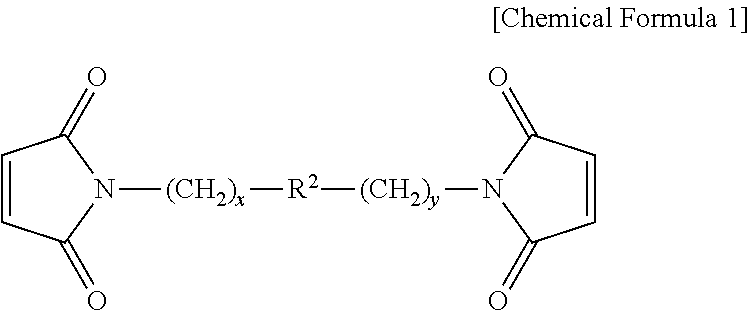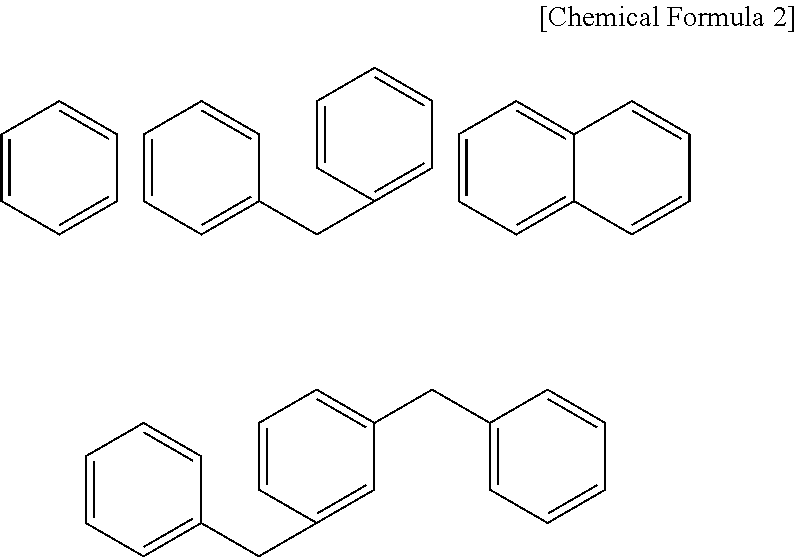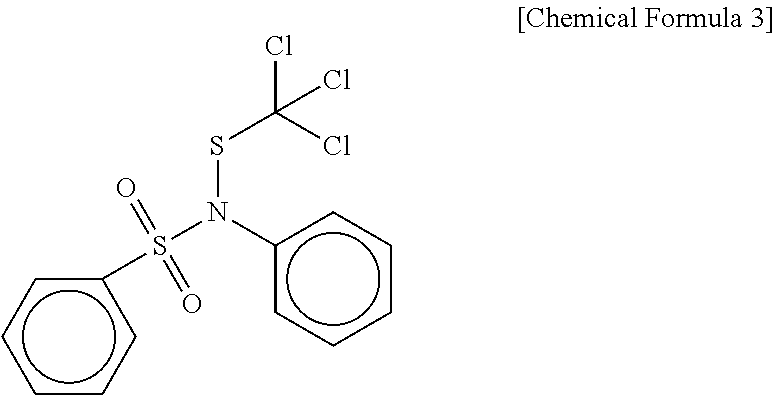Antivibration rubber composition, and antivibration rubber
a technology of anti-vibration rubber and composition, which is applied in the direction of other chemical processes, chemistry apparatuses and processes, etc., can solve the problems of static-to-static modulus ratio, compressive set and low-temperature properties that do not achieve the desired levels, and achieve good anti-vibration characteristics, good tensile properties (elongation, strength), and good thermal aging resistance
- Summary
- Abstract
- Description
- Claims
- Application Information
AI Technical Summary
Benefits of technology
Problems solved by technology
Method used
Image
Examples
examples
[0041]The invention is illustrated more fully below by way of Working Examples and Comparative Examples, although the invention is not limited by these Examples.
working examples 1 to 15
, Comparative Examples 1 to 5
[0042]The compounding formulations shown in Table 1 below were kneaded and vulcanized, and the anti-vibration rubber compositions of Working Examples 1 to 15 and Comparative Examples 1 to 5 were each vulcanized and cured under given conditions, thereby producing sheets having a length of 120 mm, a width of 120 mm and a thickness of 2 mm. These sheets were used as specimens for evaluating the anti-vibration rubbers of the invention. The resulting rubber sheets were evaluated by carrying out measurements of the hardness (Hd), tensile elongation (Eb), tensile strength (Tb), heat aging resistance, compressive set (CS), dynamic-to-static modulus ratio (Kd / Ks) and low-temperature properties in accordance with the following JIS standards. The results are presented in Table 1 (Working Examples of invention) and Table 2 (Comparative Examples).
[Hardness (Hd)]
[0043]Carried out in accordance with JIS K 6253 (type A).
[Tensile Elongation (Eb)]
[0044]Carried out in acco...
PUM
| Property | Measurement | Unit |
|---|---|---|
| temperature | aaaaa | aaaaa |
| thickness | aaaaa | aaaaa |
| width | aaaaa | aaaaa |
Abstract
Description
Claims
Application Information
 Login to View More
Login to View More - R&D
- Intellectual Property
- Life Sciences
- Materials
- Tech Scout
- Unparalleled Data Quality
- Higher Quality Content
- 60% Fewer Hallucinations
Browse by: Latest US Patents, China's latest patents, Technical Efficacy Thesaurus, Application Domain, Technology Topic, Popular Technical Reports.
© 2025 PatSnap. All rights reserved.Legal|Privacy policy|Modern Slavery Act Transparency Statement|Sitemap|About US| Contact US: help@patsnap.com



